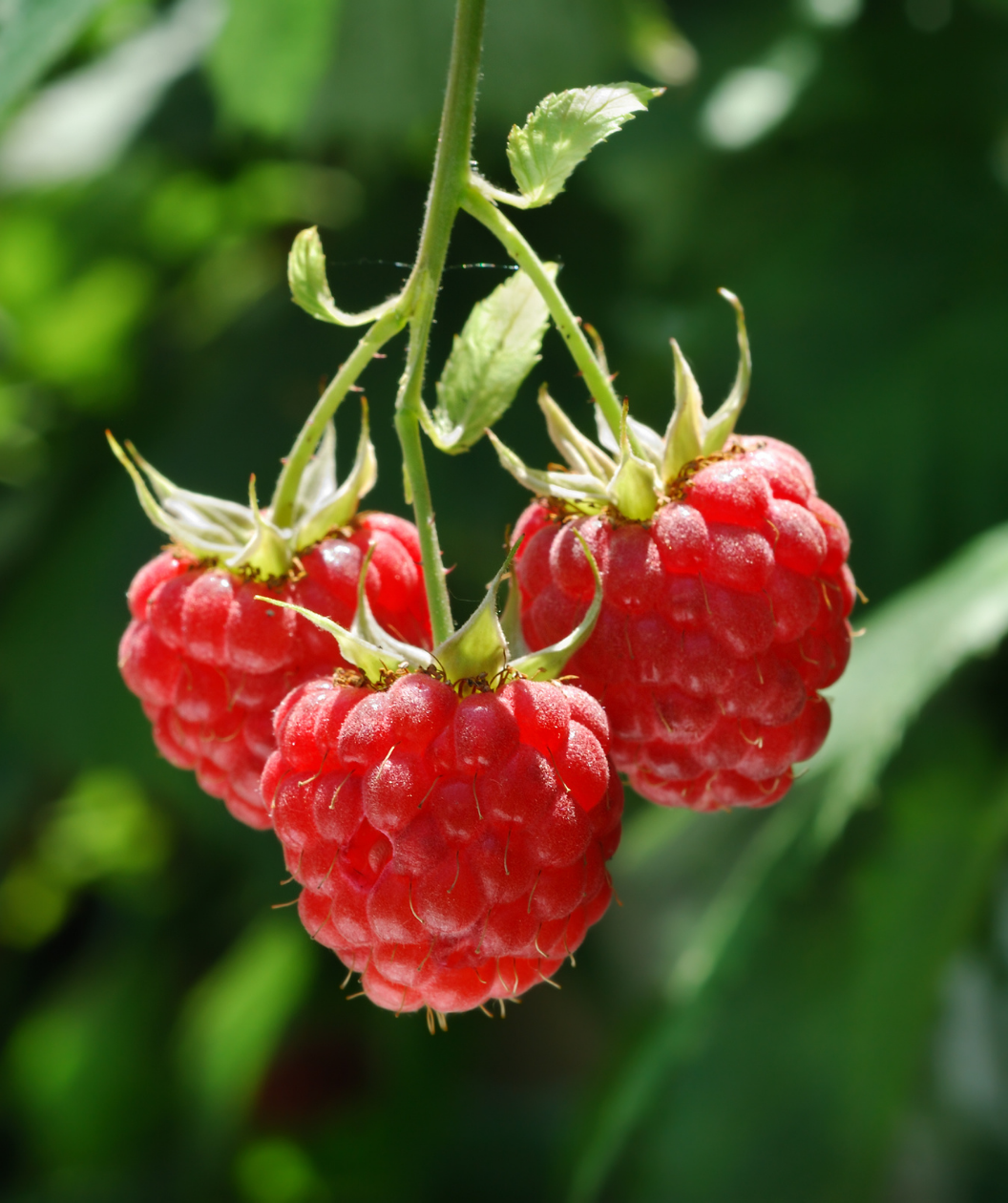The classic, ever-bearing raspberry that delivers sweet, ruby-red fruit from summer into fall and fills the garden with flavor and charm
FEATURES:
- Sold in bundles
- Produces two harvests each year: summer and fall
- Sweet, rich red raspberries perfect for fresh eating or preserves
- Self-pollinating and easy to grow
- Vigorous, hardy, and dependable year after year
- Excellent for hedgerows, garden beds, or edible landscapes
- Great choice for home gardeners of all skill levels
- Ships on our trucks because of the size of the plant; does not fit in a box
Bower & Branch Landscape Design Tip
Plant Heritage Raspberry in full sun and well-drained, fertile soil for the best harvest. Water regularly during dry spells, especially while fruit is developing. After the first frost, prune back the canes that produced fruit to ground level, leaving the new canes for next year’s crop. For the simplest care, many gardeners choose to cut all canes back each winter, allowing a single, heavy fall crop. Pair Heritage with other fruiting shrubs like blueberries or currants to create a vibrant, productive edible garden.
Growth Facts
- Hardiness Zone: 4-8
- Mature Height: 4-6' tall
- Mature Width: 3-4' wide
- Exposure: Full Sun
- Spacing: 2-3' apart
The classic, ever-bearing raspberry that delivers sweet, ruby-red fruit from summer into fall and fills the garden with flavor and charm
FEATURES:
- Sold in bundles
- Produces two harvests each year: summer and fall
- Sweet, rich red raspberries perfect for fresh eating or preserves
- Self-pollinating and easy to grow
- Vigorous, hardy, and dependable year after year
- Excellent for hedgerows, garden beds, or edible landscapes
- Great choice for home gardeners of all skill levels
- Ships on our trucks because of the size of the plant; does not fit in a box
Bower & Branch Landscape Design Tip
Plant Heritage Raspberry in full sun and well-drained, fertile soil for the best harvest. Water regularly during dry spells, especially while fruit is developing. After the first frost, prune back the canes that produced fruit to ground level, leaving the new canes for next year’s crop. For the simplest care, many gardeners choose to cut all canes back each winter, allowing a single, heavy fall crop. Pair Heritage with other fruiting shrubs like blueberries or currants to create a vibrant, productive edible garden.
Growth Facts
- Hardiness Zone: 4-8
- Mature Height: 4-6' tall
- Mature Width: 3-4' wide
- Exposure: Full Sun
- Spacing: 2-3' apart
Why plant Heritage Ever-bearing Red Raspberry?
A sure sign of summer! Heritage Ever-bearing Red Raspberries is a staple in berry gardening for its luscious sweet flavor and double the berries! Harvesting in July and again in September for all your pie, jams, and frozen berry desires! This bountiful shrub grows up to five feet tall, is considered a vigorous hearty grower, and self-pollinating! You’ll be saying, “thank you berry much,” to this heritage grower for its years of homegrown plump raspberries!
How to use Heritage Ever-bearing Red Raspberry in the landscape?
Watch your hands! Heritage, although fruitful, is a thorny shrub much like wild raspberries. Though thorny, that does not stop Heritage from producing double crops on each cane; that means double the yummy berries! However, berry crops are split: the first crop is in the fall, and the second occurs early the following summer. Before fruit production, Heritage puts on a nice flower show with clusters of white blooms that appear similar to roses.
How To Plant Heritage Ever-bearing Red Raspberry
Raspberries thrive best in soil with mildly acidic conditions that are rich in organics, moist, and well-draining. Full sun is best; however, raspberries do tolerate part shade; fruit crops may be less plentiful when plants are exposed to shade. Raspberries are self-fertile and do not require another variety to cross-pollinate.
How To Water
You will want to water your raspberry deeply 2-3 times weekly for the first three months to help with establishment. Try your very best to keep the soil moist.
How To Prune
Canes that have fruited should be pruned back and removed; new canes will grow back and produce fruit. Suckers may develop roots if not pruned back to prevent further growth.
Frequently Asked Questions
Heritage is an ever-bearing variety, producing two crops each year: one in midsummer and a second, often larger, harvest in early fall.
It grows upright and can stand on its own, but a simple wire or trellis system will help keep the canes tidy and make picking easier.
Yes. Heritage is self-pollinating, so you only need one plant to enjoy a full harvest, though multiple plants can increase yield and visual impact.





